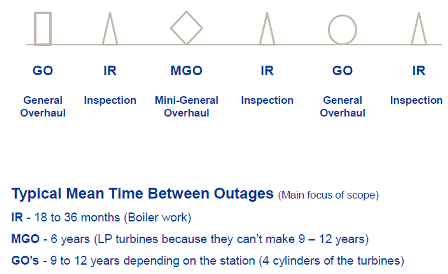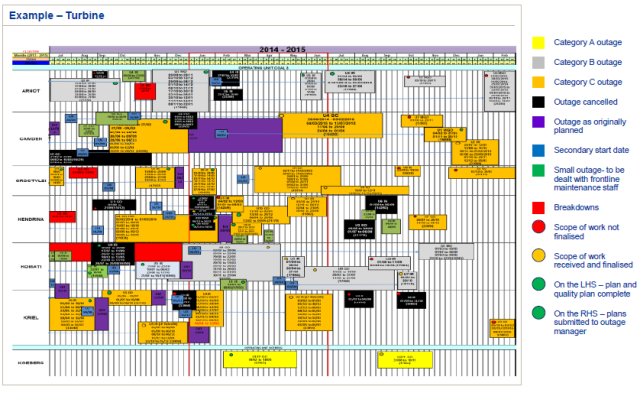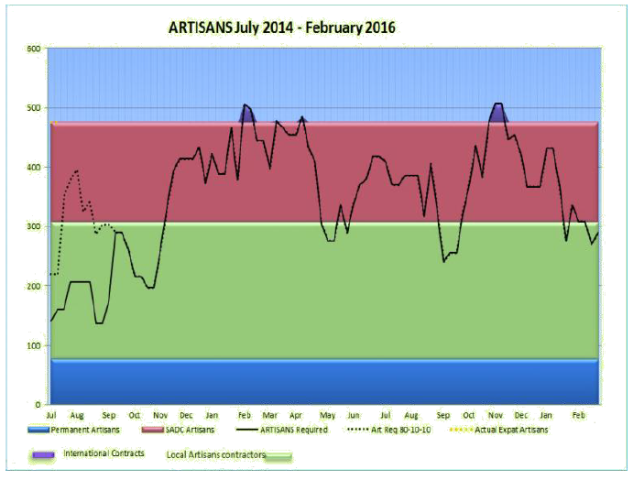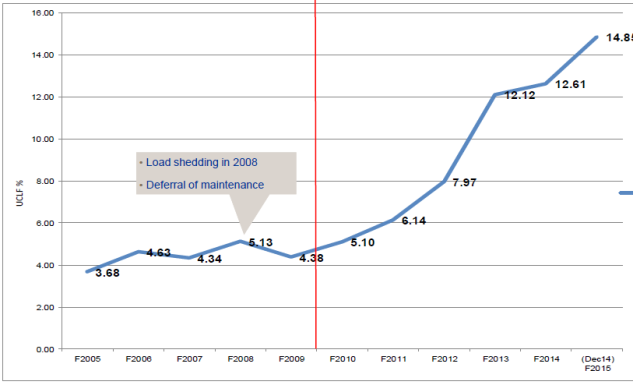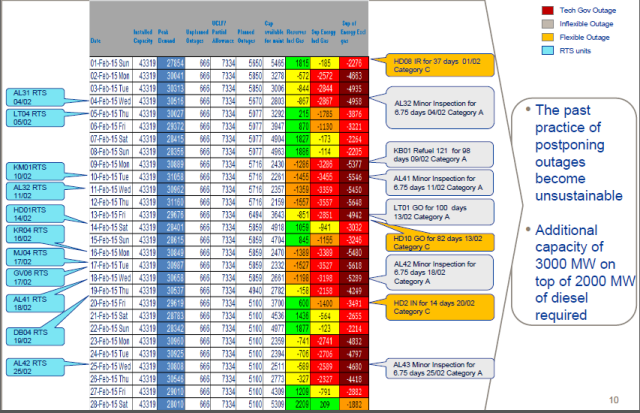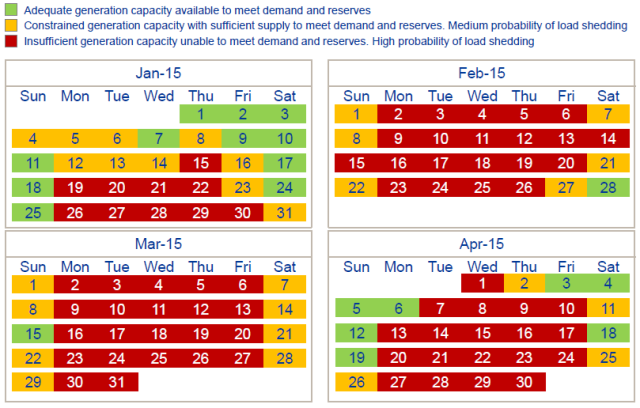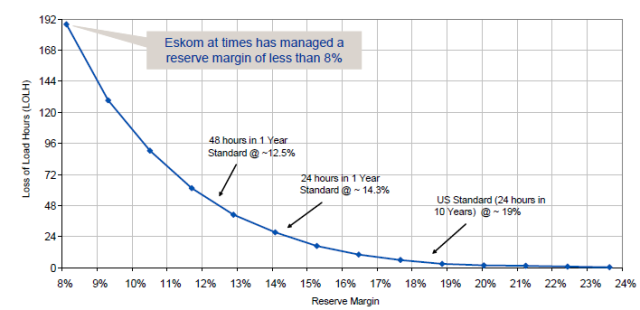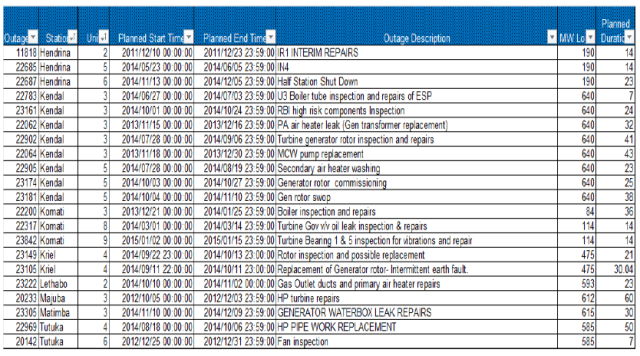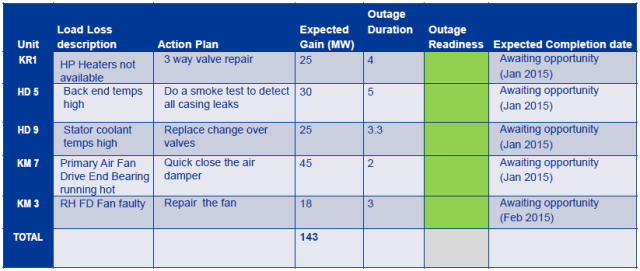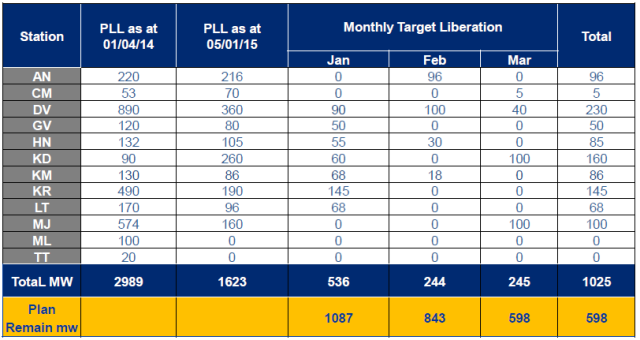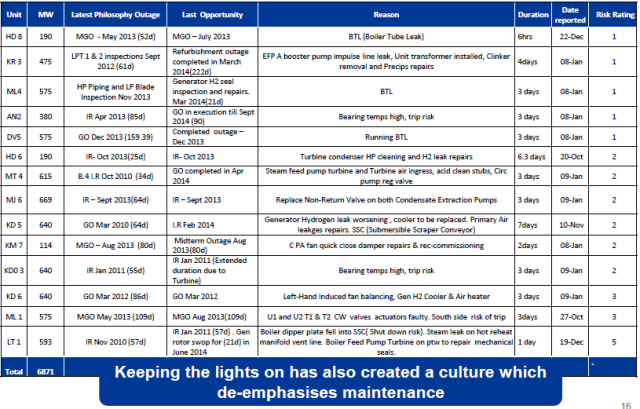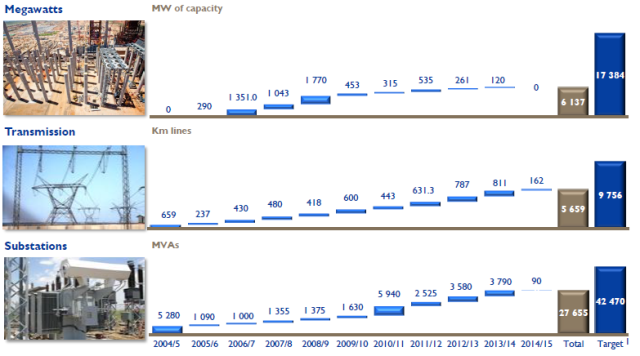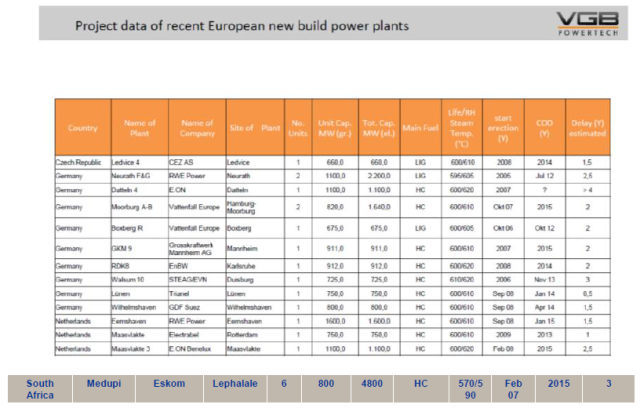Media presentation Tshediso Matona Eskom Chief Executive, January 15 2015
Introduction
On December 9 we said the following…
We apologised to the nation for the inconvenience of the past few weeks due to load shedding.
We communicated that for an extended period the power system is extremely constrained and vulnerable.
With the system being tight, any abnormal event pushes us into load shedding.
With the reserve margin being low, we do not have enough capacity to meet demand, necessitating planned, controlled and rotational load shedding, to protect the power system from a total country-wide blackout.
We also said that over the last few months we have seen a significant increase in unplanned maintenance/breakdowns on our plant (between 5000MW to 9000 MW) that has had a compounding negative effect on power system reliability.
We were able to avoid load shedding during the Festive Season
As many businesses and industries reopened last week after the festive season, electricity demand increased. That coupled with the unavailability of some of our generating units meant that we had to go into load shedding on 9th January for the first time this year.
The power system remains vulnerable, meaning that any extra load or faults in the system may necessitate load shedding.
New generating capacity and other levers are needed in order to ease the pressure on the system.
This summer has seen increased use of open cycle gas turbines (OCGTs) and other reserves to balance supply and demand. However there are constrains to the increased use.
Summer is maintenance season at Eskom. We do planned maintenance in summer, when demand is lower, so that maximum capacity is available in winter. Maintenance season is usually from September to around mid-May, but some maintenance is done during winter
On the financial side, the liquidity situation is under pressure not just because of the diesel, but also lower sales, building new capacity and the lack of cost-reflective tariffs
Executive summary (1/2)
Eskom has an elaborate maintenance regime that should maintain the health of our generation fleet
Eskom has a codified maintenance philosophy in place
This philosophy is translated into a detailed plant specific plan (down to turbine, auxiliary etc.)
The required resources are matched with the plan
This results into a maintenance schedule that is asking for 2000MW of diesel capacity and an additional 3000MW more capacity than we have
Our philosophy of keeping the lights on at all costs superseded the maintenance philosophy and has put us into a very difficult position
Keeping the lights on program has avoided load shedding in the last 7 years against all the odds managing an extremely low operating margin
There is a severe maintenance backlog
Increasingly leading to unplanned outages (load losses)
Which accelerates the problem of not being able to recover on the maintenance backlog
Some of our running plants have partial load losses, because parts are worn out, and we do not have an time window to replace/ fix
There is a further risk of enduring load losses on the remaining units
Keep the lights on philosophy has created a culture where proactive maintenance is less important
We have arrived at a point that does not allow us to ignore the health of our plants. Our reserve margin is so thin, that every incident creates a major systems issue and could also have safety implications for the plant. The massive usage of diesel helps to bridge the problem somewhat, but can’t help the systemic healing and a shortage of capacity for the coming 3 years appears to be unavoidable
Eskom is preparing to minimise the effects of load-shedding
Generation will focus on improving 5 KPIs (PCLF, Post Outage liability, UCLF, Slips and Trips)
We will a create a mechanism to transfer the capabilities of our best in class operators (Koeberg and Matimba) across the rest of the fleet
We will use Koeberg and Matimba as a blueprint to develop the required skills at a station level
We will bring our suppliers on board to deliver the required maintenance at the best possible quality
We will create transparency on what additional spend on diesel will do to the country
We will create a load-shedding schedule that supports our people and economy to the best of our ability
We will prepare our customers and our interfaces to deal with load shedding
We will continue to keep the public informed on the progress of our new build program and the implication on our system load
We will continue to pull all possible demand side levers in collaboration with our customers and government
We will develop a health recovery plan and share progress as we go
We will develop together with NERSA and government a diesel burn policy
Eskom has a codified maintenance philosophy in place
A plant specific plan exists
Resource requirements and availabili ty are matched
Maintenance backlog has led to increased breakdowns
The unexpected outages at Majuba, Duvha and the diesel situation creates an unfavorable capacity outlook
We are likely to load shed on most days in the near future
Eskom has kept the lights on over the last 7-years by managing an extremely small reserve margin
![]() Loss of Load Probability (LOLP) Curve
Loss of Load Probability (LOLP) Curve
Required reserve margin is directly linked to the system reliability you are trying to achieve for your system, and the various risks implicit in your system
NERSA have recommended a 19% NRM and Eskom’s internal requirements are between 15 and 18% NRM. There have been no expectation set for Expected Energy Not Served (EENS) and Loss of Load Probability (LOLP)
Keeping the lights on has created a backlog of maintenance
Backlog of outages
Which accelerates the problem of not being able to recover on our maintenance backlog
Deferred maintenance causes partial load losses
Some of our running plants have partial load losses because parts have worn out and there is no time to repair
Summary of partial load loss plan (Jan 15 – Mar 15)
Further potential Risk of UCLF Increase on remaining units
Eskom is committed to minimising the effects of necessary load shedding
We have arrived at a point that does not allow us to ignore the health of our plants. Our reserve margin is so thin, that every incident creates a major systems issue and could also have safety implications for the plant. The massive usage of diesel helps to bridge the problem somewhat, but can’t help the systemic healing and a shortage of capacity for the coming 3 years appears to be unavoidable
Eskom is preparing to minimise the effects of load-shedding
Generation will focus on improving 5 KPIs (PCLF, Post Outage liability, UCLF, Slips and Trips)
We will a create a mechanism to transfer the capabilities of our best in class operators (Koeberg and Matimba) across the rest of the fleet
We will use Koeberg and Matimba as a blueprint to develop the required skills at a station level
We will bring our suppliers on board to deliver the required maintenance at the best possible quality
We will create transparency on what additional spend on diesel will do to the country
We will create a load-shedding schedule that supports our people and economy to the best of our ability
We will prepare our customers and our interfaces to deal with load shedding
We will continue to keep the public informed on the progress of our new build program and the implication on our system load
We will continue to pull all possible demand side levers in collaboration with our customers and government
We will develop a health recovery plan and share progress as we go
We will develop together with NERSA and government a diesel burn policy
Capacity expansion programme overview
To date, the construction work that has been completed has added ~ 6 137MW of capacity, ~ 5 659km of transmission network and ~ 27 655 of MVAs
1. Refers to the target of the total capacity expansion programme
Build-Programme Dates
Medupi Power Station Project (6 x 794MW)
1st Unit (Unit 6) Synchronization Date – 1st half 2015
1st Unit Commercial Operations Date – June 2015
Kusile Power Station Project (6 x 800MW)
1st Unit (Unit 1) Synchronization Date – 1st Half 2017
1st Unit Commercial Operations Date – 2nd Half 2017
Ingula Pumped Storage Scheme Project (4 x 333MW)
1st Unit (Unit 3) Synchronization Date – 1st Half 2016
1st Unit Commercial Operations Date – 1st Half 2016
Project Sere (100MW)
Full Commercial Operations Date – 1st Half 2015
First unit – Medupi Unit 6 progress
While the progress towards synchronisation is proceeding very well Eskom has previously indicated that the first unit would be synchronised later than 24 December 2014 that all systems are fully tested, safety-cleared and ready for continuous operation, and that no additional risks impact the good progress made to date.
Significant milestones have been reached towards synchronisation of Unit 6
Erratic power will flow to grid before full power is achieved during the first half of 2015
Our build programme compares well with global build programmes . ..
Conclusion
The power system will be severely constrained and will begin to ease once new generating capacity comes online and other levers materialise
The system will remain tight in Summer. Risks of extreme weather related outages such as wet coal, unplanned outage extensions and unavailability of primary energy may worsen the situation
The country needs to be prepared for load shedding.
Load shedding is a painful yet necessary decision to protect the electricity power system from a total black-out. A total black-out would have significant consequences on the South African economy
It remains important for all customers to maintain or achieve 10% electricity savings especially in the commercial, industrial and residential sectors.
We are committed to provide early warning, however at times the system status changes rapidly. Pleasefollowus on twitter @Eskom_SA and @Eskom_MediaDesk for updates.
Communication on the power system
Eskom communicates via the national, regional and local media including social media regarding its intention to load shed and during the process.
Load shedding information and schedules are available on Eskom’s website for Eskom customers
National and regional spokesmen continue to spread the message and share additional information to provide information and clarity
Stakeholders and direct customers are informed predominantly via social media and text messages and are able to communicate via Eskom’s customer contact centre
The Power Alert on SABC and DSTV channels continue to provide real-time information on the power system status and encourages customers to switch off. An average of 350MW reduction in demand is observed during this flighting
Eskom issues a system power bulleting twice a week, and holds a Quarterly system status media briefing to provide regular updates
Face to face stakeholder engagements provide an opportunity for further dialogue on the status
Electricity users are encouraged to follow Eskom on twitter and Facebook and to download the free Eskom App ‘Myeskom’ from android and Apple stores. The App is in process of being updated to provide load shedding information
…
Extracted from PDF – see here for original version.
Issued by Eskom, January 16 2015
Click here to sign up to receive our free daily headline email newsletter

